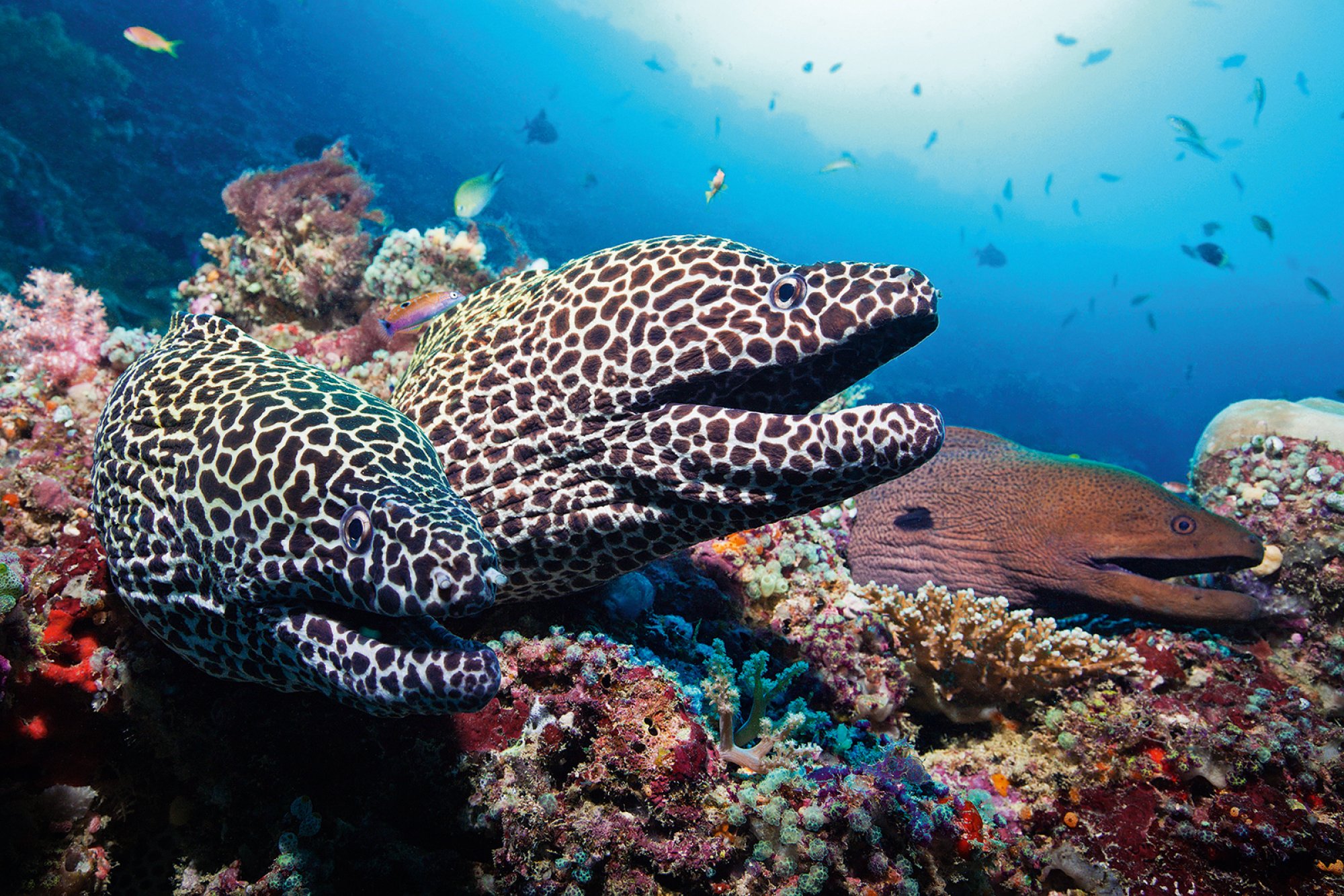Diving with Moray Eels
Captivating Reef Dwellers
One of the most fascinating fish on the reef, moray eels come in nearly every size and color from the tiny, bright blue ribbon eel, the smallest averaging only 25 cm long, to the black speckled giant moray which can grow up to 4 meters in length! In fact, there are nearly 200 different species. Most morays are marine dwelling fish, but several species have been seen in brackish water, and just a few are found in fresh water. They are clearly distinguishable from the other reef fish with their long, slithering bodies, pointy snouts full of sharp teeth, and long dorsal fins that run the entire length of their bodies. No matter the species, these animals are always an exciting site to see while scuba diving.
They can live in both tropical and temperate waters but are mostly found inhabiting coral reefs in warm seas all throughout the world. If you are diving on a warm water reef, chances are there is a moray eel somewhere nearby, you just have to find it. They are usually seen with their heads poking out from the reef and their mouths oscillating open and closed, a behavior often times mistaken as aggressiveness, but is actually the way in which they keep water pumping past their gills for respiration. If you have always wanted to dive with moray eels, check out all of the dive sites around the world on the map below where they have been seen.
Dive Sites with this Animal View more on map

★★★★★ HP Reef / Rainbow Reef
One of the most colorful dive sites in North Male Atoll. On the south side of Girifushi island with abundant fish life and very nice soft corals, there are numerous blue soft corals and a swim through. The current can be strong!

★★★★☆ Okobe Thila
This amazing reef are 3 blocks. The biggest begins in the south between 80-100m long and it's full of corals, it would be nice we can start here. In the east we have another wonderful block a bit similar to east block Maya Thila covert full with corals. In the north is the smallest block. AOW or higher

★★★★★ Back Kani
Easy but always nice dive. The top of the reef drops down from 7m to 30/35m and then runs into the sand. Depending on the current, you simply dive the right or left shoulder. With a little luck, this dive site offers everything that makes diving exciting!

★★★★☆ Kani Corner
Kani Corner is basically a slope that goes to 25 - 30 m in a sandy bottom. There are some big blocks this deep and at the right time, mantas visit the blocks or pass by the top of the reef. The current can be strong so take caution.

★★★★☆ Frederiksted Pier
One of the top macro dives anywhere! Scattered ruins and columns are coral encrusted and provide habitat for many types of shallow sea life. The pier is 1526ft/465m long so lots to discover with a gradual westerly decline. Perfect for snorkeling & non-certified divers too.

★★★★☆ Badia de Tamariu
The boat jetty and the entrance to this house reef are only 30 m from the base. The most beautiful part of the bay is reserved for divers and swimmers and secured by a buoy line. This beautiful house reef offers something for everyone down to a maximum depth of 15 m.
